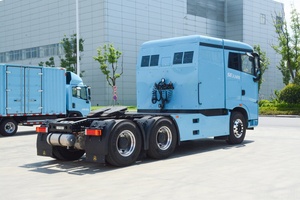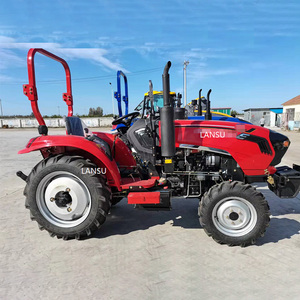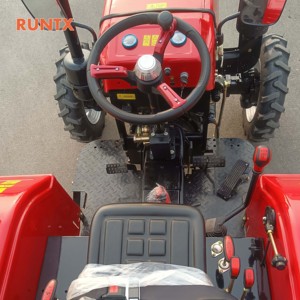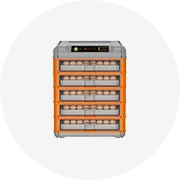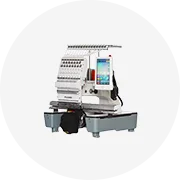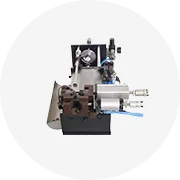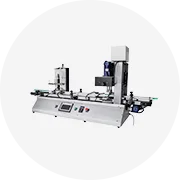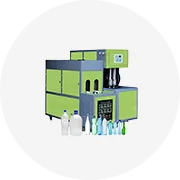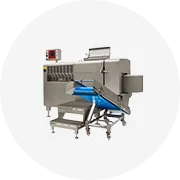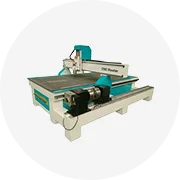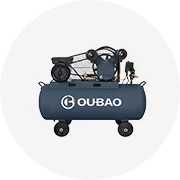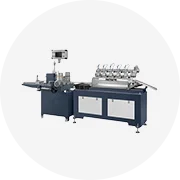Types of Electric Terminal Tractors
An electric terminal tractor, also known as electric yard trucks or industrial tractors, are specialized vehicles designed for moving semi-trailers and cargo containers within terminal areas. These eco-friendly vehicles reduce emissions, enhance operational efficiency, and significantly improve working conditions in distribution centers, ports, rail yards, and manufacturing sites.
Industry Insight: The global electric terminal tractor market is experiencing rapid growth, with a projected CAGR of 26.1% from 2023 to 2030, driven by increasing environmental regulations and corporate sustainability initiatives.
Standard Electric Terminal Tractors
Designed for heavy towing tasks with powerful electric motors providing exceptional torque levels. These workhorses can pull heavy loads over extended distances, making them ideal for shipping ports and rail yards.
Best for: Port operations, rail yards, high-volume logistics centers
Compact Electric Terminal Tractors
Featuring smaller, more nimble designs for space-limited operations. Their zero-emission operation and quieter performance make them perfect for distribution centers and congested urban areas where noise pollution is a concern.
Best for: Urban distribution centers, smaller warehouses, noise-sensitive areas
High-Capacity Electric Terminal Tractors
Engineered for demanding, heavy-duty applications with enhanced towing capacity for transporting the heaviest cargo and freight. Their robust design ensures reliability even under extreme conditions.
Best for: Industrial applications, steel mills, paper mills, heavy manufacturing
Multi-Directional Electric Terminal Tractors
Equipped with specialized steering systems allowing movement in multiple directions, including sideways travel and tight turning radiuses. Their advanced maneuverability makes them perfect for crowded, space-constrained environments.
Best for: Congested terminals, tight warehouse spaces, complex loading docks
Rough Terrain Electric Terminal Tractors
Built with robust, durable designs including all-wheel drive, enhanced ground clearance, and reinforced chassis. These tractors withstand challenging conditions while maintaining eco-friendly operation.
Best for: Construction sites, forestry operations, mining facilities, uneven surfaces
Cold Storage Electric Terminal Tractors
Specially designed for temperature-controlled environments with specialized heating systems and cold-resistant features to maintain performance in refrigerated warehouses and cold storage facilities.
Best for: Food distribution centers, pharmaceutical storage, refrigerated warehouses
| Tractor Type | Key Features | Ideal Applications | Typical Battery Range |
|---|---|---|---|
| Standard | High torque, robust build, extended range | Ports, rail yards, logistics hubs | 80-100 miles |
| Compact | Small footprint, enhanced maneuverability, quieter operation | Urban centers, small warehouses | 70-90 miles |
| High-Capacity | Heavy-duty design, reinforced frame, maximum towing capacity | Industrial facilities, manufacturing | 60-80 miles |
| Multi-Directional | Advanced steering, multiple driving modes, tight turning radius | Congested terminals, space-limited facilities | 70-90 miles |
| Rough Terrain | All-wheel drive, enhanced ground clearance, reinforced chassis | Construction, forestry, mining | 50-70 miles |
| Cold Storage | Specialized heating, cold-resistant components, insulated cab | Refrigerated warehouses, cold storage | 60-80 miles |
Key Specifications of Electric Terminal Tractors
Understanding the specifications of electric terminal tractors is crucial for selecting the right equipment for your specific operational needs. These specifications determine the capabilities and limitations of each tractor model.
Load Capacity
The maximum weight a tractor can handle, ranging from 20,000 to 80,000 pounds. Select based on your average cargo weight requirements.
Power Output
Measured in horsepower or kilowatts, determining towing speed and hill-climbing ability. Electric motors provide instant torque for superior pulling power.
Battery Range
The distance achievable before recharging, typically 70-100 miles depending on load, terrain, and speed.
Charging Time
Duration required for a full battery charge, ranging from 1-8 hours based on the charging system technology.
Turning Radius
Minimum space required to complete a turn, typically 15-30 feet. Smaller radius enables better maneuverability in tight spaces.
Height
Ground-to-roof measurement, usually 8-11 feet. Critical for operations in areas with height restrictions.
Length
Front-to-rear measurement, approximately 25-35 feet. Impacts overall maneuverability in tight spaces.
Vehicle Weight
Typically 25,000-35,000 pounds. Heavier than conventional tractors, providing stability when towing heavy loads.
Electric vs. Diesel Terminal Tractor Comparison
Specification Tip: When evaluating battery range, consider that actual performance may be 15-20% lower than manufacturer specifications when operating under full load or in extreme temperatures. For critical operations, choose a model with a range buffer beyond your daily requirements.
Maintenance Requirements for Electric Terminal Tractors
Regular maintenance is essential for ensuring safety, reliability, and longevity of electric terminal tractors, especially when handling heavy loads in demanding environments. A well-maintained tractor operates more efficiently and experiences fewer unexpected breakdowns.
Essential Maintenance Procedures
-
Battery System Inspection
Regularly check battery health and performance. Keep terminals free from corrosion, ensure cables are undamaged, and verify all connections are secure. Battery monitoring systems should be tested quarterly.
-
Charging Protocol Adherence
Follow manufacturer guidelines for optimal charging. Fully charge daily but avoid overcharging, which can degrade battery life. Implement a charging schedule that aligns with operational patterns.
-
Tire Maintenance
Inspect tires for damage (cuts, punctures, uneven wear) and maintain proper pressure according to manufacturer specifications. Proper tire maintenance improves safety, extends tire life, and optimizes energy efficiency.
-
Electric Motor Servicing
Change air filters regularly following manufacturer guidelines. Check motor mounts for tightness and inspect cooling systems to ensure optimal motor performance and temperature regulation.
-
Hydraulic System Monitoring
Check for leaks, damage, or wear in the hydraulic system. Maintain proper fluid levels and replace hydraulic filters according to the maintenance schedule. Clean hydraulic coolers to prevent overheating.
-
Brake System Inspection
Regularly examine brake pads, discs, and fluid levels. Replace worn components promptly and adjust brake settings as needed to ensure optimal stopping power and operator safety.
-
Steering System Verification
Check for damage, wear, or leaks in the steering system. Maintain proper steering fluid levels and test steering response to ensure precise control during operations.
| Maintenance Task | Frequency | Importance | DIY Possible? |
|---|---|---|---|
| Battery inspection | Weekly | Critical | Yes, with training |
| Tire pressure check | Daily | High | Yes |
| Brake inspection | Monthly | Critical | Partial |
| Hydraulic system check | Monthly | High | Partial |
| Electric motor service | Quarterly | Medium | No |
| Steering system inspection | Monthly | High | Partial |
| Full system diagnostic | Semi-annually | Critical | No |
Safety Warning: Always disconnect the main power supply before performing maintenance on electric components. Electric terminal tractors operate with high-voltage systems that can cause serious injury or death if handled improperly. When in doubt, consult with a certified technician.
How to Choose the Right Electric Terminal Tractor
Selecting the optimal electric terminal tractor requires careful consideration of operational needs, facility characteristics, and long-term business objectives. Follow this comprehensive selection guide to make an informed decision.
Critical Selection Factors
Determine Operational Requirements
Begin by thoroughly analyzing your specific needs:
- Cargo type and weight profiles
- Required daily travel distance
- Operational hours and shifts
- Terrain conditions and gradients
- Space constraints in your facility
Evaluate Technical Specifications
Focus on these key technical parameters:
- Towing capacity (match to your heaviest loads plus 20% safety margin)
- Turning radius (critical for tight spaces)
- Ergonomic features (seat adjustability, control layout)
- Battery capacity and charging infrastructure compatibility
- Ground clearance and overall dimensions
Selection Tip: Consider your future growth plans when selecting an electric terminal tractor. Investing in a slightly higher capacity model than currently needed can accommodate business expansion without requiring premature equipment replacement.
Additional Selection Criteria
| Selection Factor | What to Look For | Why It Matters |
|---|---|---|
| Battery & Charging | Sufficient range for daily operations, compatible charging infrastructure, fast-charging capability | Determines operational uptime and integration with existing facility infrastructure |
| Performance | High-torque motors, appropriate speed range, acceleration capabilities, efficient energy management | Impacts productivity, operational efficiency, and handling of varied loads |
| Safety Features | Visibility enhancements, pedestrian detection, rollover protection, emergency shutdown systems | Protects operators, nearby workers, and valuable cargo while reducing liability |
| Comfort & Ergonomics | Adjustable seating, climate control, intuitive controls, reduced noise/vibration, easy entry/exit | Reduces operator fatigue, improves productivity, and decreases potential for injuries |
| Maintenance & Service | Accessible components, diagnostics systems, reliable service network, parts availability | Minimizes downtime, reduces total cost of ownership, extends equipment lifespan |
| Future-Proofing | Software update capability, modular design, expandable battery options, telematics readiness | Ensures equipment remains viable as technology and operational needs evolve |
Pre-Purchase Checklist
- Arrange a demonstration: Test drive multiple models to evaluate handling, comfort, and performance under actual working conditions.
- Speak with current users: Contact businesses with similar operations using the models you're considering.
- Calculate total cost of ownership: Include purchase price, maintenance, energy costs, and projected residual value.
- Verify warranty coverage: Pay special attention to battery warranty terms and exclusions.
- Assess manufacturer stability: Choose established manufacturers with proven track records for reliability and service.
- Review training programs: Ensure comprehensive operator and maintenance training is available.
DIY Troubleshooting and Repair Guide
While electric terminal tractors feature complex electrical systems that typically require professional maintenance, there are certain minor issues that knowledgeable operators can safely address. This section covers basic troubleshooting and simple repair procedures for common issues.
Safety Warning: Electric terminal tractors contain high-voltage components that can cause serious injury or death. Never attempt repairs beyond your expertise level or without proper safety equipment. Always disconnect power sources before beginning any repair work.
Basic DIY Troubleshooting Steps
-
Issue Identification
Perform a thorough visual inspection to identify obvious problems. Look for blown fuses, loose connections, fluid leaks, or physical damage. Use the onboard diagnostic system (if available) to check for error codes.
-
Power Disconnection
Before attempting any repair, disconnect all power sources following the manufacturer's safety protocol. This typically involves disconnecting the main battery pack using the isolation switch and following proper lockout/tagout procedures.
-
Access Panel Removal
Using appropriate tools, carefully remove access panels to reach the component requiring attention. Document the position of all components and fasteners to ensure proper reassembly.
-
Component Repair or Replacement
For simple issues like fuse replacement, carefully remove the blown fuse using insulated tools and replace with an identical fuse matching the manufacturer's rating. Never substitute a higher-rated fuse as this can cause system damage.
-
System Reconnection
After completing the repair, carefully reconnect all components in reverse order. Ensure all connections are secure and properly seated before restoring power to the system.
-
Operational Testing
After repairs are complete, perform a gradual system test starting with basic functions before progressing to full operation. Monitor the repaired system for proper operation and document all work performed.
| Common Issue | Possible Cause | DIY Solution | When to Call Professional |
|---|---|---|---|
| Tractor won't power on | Blown fuse, disconnected battery, emergency stop engaged | Check fuses, verify battery connections, reset emergency stop | If basic checks reveal no issue |
| Reduced range | Low tire pressure, battery degradation, increased load | Correct tire pressure, verify load is within specs | If range continues to decrease |
| Unusual noise | Loose components, foreign objects, bearing wear | Visual inspection, tighten accessible hardware | If noise persists after basic checks |
| Slow lifting/hydraulic response | Low hydraulic fluid, air in system | Check and top up hydraulic fluid if user manual permits | If system requires bleeding or shows leaks |
| Warning lights activated | System-specific fault detected | Check user manual for code interpretation | For any critical system warnings |
Maintenance Tip: Create a detailed maintenance log documenting all issues, repairs, and regular service activities. This record helps identify recurring problems, validates warranty claims, and provides valuable information when troubleshooting complex issues.
Frequently Asked Questions
An electric terminal tractor is a specialized industrial vehicle designed to move semi-trailers and cargo containers within terminal areas, distribution centers, and warehouses. Unlike traditional terminal tractors powered by internal combustion engines, electric terminal tractors use electric motors and batteries, offering zero emissions, quieter operation, and reduced maintenance requirements. They are specifically engineered for short-distance, high-frequency movements in logistics environments.
Electric terminal tractors offer numerous advantages over traditional diesel or gasoline-powered models:
- Environmental benefits: Zero tailpipe emissions, reducing air pollution and carbon footprint
- Improved workplace environment: Significantly quieter operation, reducing noise pollution and enhancing communication
- Lower operating costs: Reduced fuel costs (electricity vs. diesel) and 30-40% lower maintenance expenses
- Enhanced performance: Electric motors deliver instant torque, improving acceleration and responsiveness
- Regulatory compliance: Meet increasingly strict emissions regulations in ports and urban areas
- Operational efficiency: Smoother operation, less vibration, and reduced heat generation
- Corporate sustainability: Alignment with ESG goals and green initiatives
Proper maintenance of electric terminal tractors involves several key practices:
- Battery management: Regular battery health monitoring, proper charging practices, and terminal cleaning
- Cooling system maintenance: Checking and maintaining the battery and motor cooling systems
- Tire care: Regular pressure checks, rotation, and inspection for wear patterns
- Hydraulic system inspection: Monitoring fluid levels, checking for leaks, and filter replacement
- Brake system servicing: Regular inspection of pads, discs, and hydraulic components
- Electrical connections: Verifying secure connections and checking for corrosion
- Software updates: Ensuring control systems have current firmware versions
- Operator training: Comprehensive training on proper operation and daily maintenance checks
Following the manufacturer's recommended maintenance schedule is crucial for optimal performance and longevity.
Electric terminal tractors play a crucial role in sustainability initiatives for several reasons:
- They eliminate direct greenhouse gas emissions during operation, supporting carbon reduction goals
- They significantly reduce local air pollutants like NOx, SOx, and particulate matter that affect air quality and public health
- Their higher energy efficiency (80-90% vs. 20-30% for diesel) reduces overall energy consumption
- They can be powered by renewable energy sources, further reducing environmental impact
- The reduction in noise pollution improves working conditions and reduces impact on surrounding communities
- They support companies in meeting increasingly stringent environmental regulations and sustainability targets
- They demonstrate tangible commitment to sustainable practices to customers, investors, and stakeholders
Yes, modern electric terminal tractors are specifically designed for heavy-duty applications. They offer several advantages for demanding operations:
- Superior torque characteristics: Electric motors deliver 100% of their torque instantly, providing excellent pulling power for heavy loads
- High capacity models: Available with towing capacities up to 80,000 pounds, matching or exceeding diesel equivalents
- Improved power control: Precise electric power delivery offers better control when handling sensitive cargo
- Enhanced performance in extreme conditions: Specialized models available for cold storage, rough terrain, and other challenging environments
- Durability: Robust construction and simpler drivetrains with fewer moving parts improve reliability
- Extended duty cycles: Fast-charging options and battery swap systems enable 24/7 operation
Leading ports, distribution centers, and heavy industrial facilities worldwide have successfully implemented electric terminal tractors for their most demanding applications.



